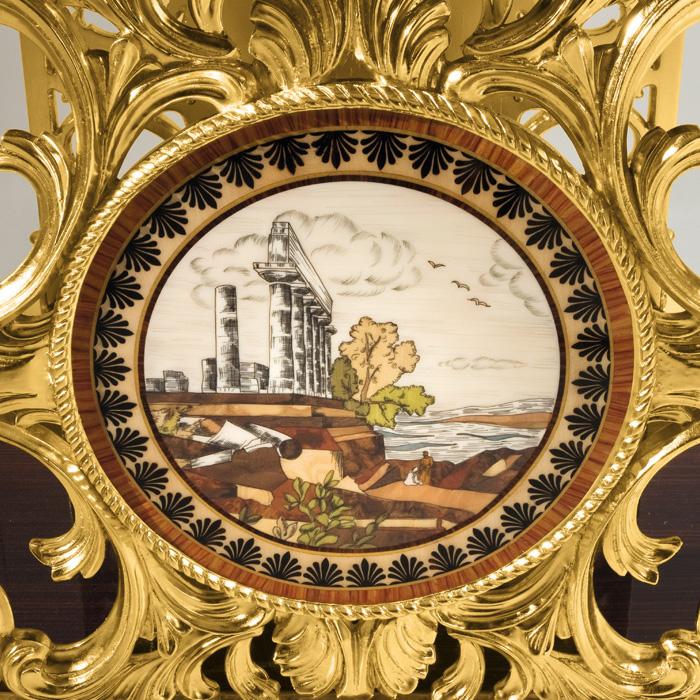
It all comes together in Italian interior design, which has a long and rich history. Italian design encapsulates many diverse styles and techniques, from unique materials to innovative furniture.
Want to learn more about the history of Italian design? Below, we share the essential guide to understanding Italian design history so let’s dive right in!
Natural Flooring
Older Italian history saw a lot of rich and abundant flooring finishes. Marble of the highest quality and imported stone remain favored.
Carpeting was never used, however, and this still stands true. Instead, Italians favor high-quality rugs with neutral colors that enhance the other furniture items in the room.
Today, Italians still favor natural flooring. Marble, tile, or parquet are selected. Italian design also often uses colorful accents to add warmth and coziness to a space.
Modern Italian Design
Modern Italian design is quite different from its older counterparts.
It differs because a minimalist and cleaner approach to lines and forms are favored. Although this minimalism isn’t quite like its Japanese or Scandinavian counterparts, Italians enjoy a clean and simple aesthetic.
For example, there is an emphasis on uncluttered space, where items and objects are kept away from the eyes. In addition, the older decorative style that characterized Italian design has changed for a less decorative style.
Thus, functional elements are highly valued. For example, sofa cum day beds or chairs have both sitting and storage capabilities. This allows different furniture items to double up on function and price.
Terracotta Is Central to Italian Design
Terracotta is a central material used across Italian history.
While terracotta did not originate in Italy, it is one of the most common materials used in interior design. It is used all over the country for walls, floors, tiles, pottery, and more.
The rust color of terracotta is also seen on fabrics and clothes. The warm earthen tones are constant throughout Italian design history. You will see it in many forms in Italian homes and designs, from tiles in the kitchen to rust-colored walls.
Even objects like lamps and curtains tend to follow this color scheme of terracotta-based rich colors!
Italian Furniture
Traditionally, Italian furniture is crafted as sturdy and stable.
Furniture is built to last, with carefully chosen materials and hardware that ensure that table will stand up to the ravages of times.
Traditionally, Italian furniture uses a lot of dark wood, such as lacquered oak or pine. Wrought iron handles and accents were also prevalent features.
Upholstered fabrics with different prints and materials were also used with wood and wrought iron. The overall effect of older Italian furniture is darker, heavier, and sturdy.
Today, Italian furniture is still built to last. All furniture items are well crafted and thoughtful, with small details that elevate each piece.
Light Fixtures
A big part of Italian interiors is the lighting. They can add instant warmth and depth to a space and make the room seem cozy and comfortable.
Giant beautiful chandeliers were used to convey a sense of luxury and opulence. These are central decorative elements that add character and personality to a space.
Today, giant chandeliers are still favored. However, more modern lighting fixtures have also been introduced to add a more updated look to a space.
For example, hanging pendant lights in central areas like the kitchen island or over the dining table is widespread. These fixtures also add functional lighting to critical spaces and complement essential furniture pieces in the room.
Smaller light fixtures are also used to create a soft and diffused light!
Kitchen Evolution
Kitchens have always been a central part of Italian design. The culture favors the kitchen as the heart of the home, which continues to be the case even today.
The interior layout of Italian homes has thus always placed the kitchen in the middle, with other rooms leading off into it. However, in older times, the kitchen used to be reserved only for cooking.
Today, kitchens aren’t only used for cooking. Instead, they are often connected to the dining or living room to follow the open concept plans favored today.
This then increases the communication between different parts of the home, with sofas, dining tables, and other furniture to facilitate easy conversation across different areas.
Source Quality Italian Interior Design Pieces
It is no secret that most Italian designers have an inherent eye for good design. Italian culture also really values the home and interior spaces.
That’s why it’s no surprise that Italian interior design is so well developed and beautiful. But it can be challenging to source quality Italian furniture pieces today.
That’s where Michelangelo Designs comes in. We offer premier furniture choices in New Jersey that are elevated, luxurious, and high-end.
Where Can I Buy Italian Furniture?
Modern Italian furniture is a visual delight, as it is beautifully crafted and designed. Now that you know how different Italian interior designs have evolved, you will appreciate additional furniture items!
If you’re looking for quality, high-end Italian furniture, that is 100% made in Italy. Come visit Michelangelo Designs in New Jersey. We have been trading in Italian furniture since 1985.
Click here to check out our products today!

